
Blowing Point Village: Anguilla's Oceanic Gem
Discover Blowing Point Village, Anguilla's serene seaside escape, where pristine beaches, crystal-clear waters, and vibrant local culture await your exploration.
Blowing Point Village is a serene seaside community located in Anguilla, known for its stunning natural beauty and laid-back charm. Nestled along the southeastern coast, this picturesque village offers a perfect blend of pristine beaches, crystal-clear waters, and lush landscapes. Whether you're seeking relaxation or adventure, Blowing Point Village has something to offer every traveler. One of the main attractions of Blowing Point Village is its beautiful beaches. The soft, powdery sand and calm turquoise waters make it an ideal spot for sunbathing, swimming, and snorkeling. Rendezvous Bay, one of the most popular beaches in the area, is just a short drive away and offers stunning views of St. Martin. You can also take a leisurely stroll along the coastline and discover hidden coves and peaceful spots perfect for a quiet picnic. In addition to its natural beauty, Blowing Point Village is also a gateway to exploring the rest of Anguilla. From here, you can easily catch a ferry to nearby islands like St. Martin and St. Barths, offering even more opportunities for adventure and exploration. The village itself is home to charming local shops, delicious restaurants, and friendly residents who are always eager to share their culture and traditions with visitors. For those interested in water activities, Blowing Point Village is a paradise. You can rent a kayak or paddleboard and explore the coastline at your own pace, or join a guided tour for a more in-depth experience. Fishing enthusiasts will also find plenty of opportunities to cast a line and try their luck at catching some of the local marine life. Additionally, the village's proximity to the Anguilla Marine Park makes it an excellent base for diving and snorkeling excursions.
Local tips in Blowing Point Village
- Bring plenty of sunscreen and a hat to protect yourself from the strong Caribbean sun.
- Rent a car to explore the island at your own pace and visit nearby attractions.
- Visit local restaurants to try traditional Anguillian dishes like crayfish and Johnny cakes.
- Check the ferry schedules in advance if you plan to visit nearby islands like St. Martin or St. Barths.
- Pack water shoes for exploring rocky areas and hidden coves along the coastline.
Blowing Point Village: Anguilla's Oceanic Gem
Blowing Point Village is a serene seaside community located in Anguilla, known for its stunning natural beauty and laid-back charm. Nestled along the southeastern coast, this picturesque village offers a perfect blend of pristine beaches, crystal-clear waters, and lush landscapes. Whether you're seeking relaxation or adventure, Blowing Point Village has something to offer every traveler. One of the main attractions of Blowing Point Village is its beautiful beaches. The soft, powdery sand and calm turquoise waters make it an ideal spot for sunbathing, swimming, and snorkeling. Rendezvous Bay, one of the most popular beaches in the area, is just a short drive away and offers stunning views of St. Martin. You can also take a leisurely stroll along the coastline and discover hidden coves and peaceful spots perfect for a quiet picnic. In addition to its natural beauty, Blowing Point Village is also a gateway to exploring the rest of Anguilla. From here, you can easily catch a ferry to nearby islands like St. Martin and St. Barths, offering even more opportunities for adventure and exploration. The village itself is home to charming local shops, delicious restaurants, and friendly residents who are always eager to share their culture and traditions with visitors. For those interested in water activities, Blowing Point Village is a paradise. You can rent a kayak or paddleboard and explore the coastline at your own pace, or join a guided tour for a more in-depth experience. Fishing enthusiasts will also find plenty of opportunities to cast a line and try their luck at catching some of the local marine life. Additionally, the village's proximity to the Anguilla Marine Park makes it an excellent base for diving and snorkeling excursions.
When is the best time to go to Blowing Point Village?
Iconic landmarks you can’t miss
Elvis Beach Bar
Discover the vibrant atmosphere and delicious offerings at Elvis Beach Bar in Anguilla, where beach life meets culinary delight.

Sunshine Shack
Experience the vibrant flavors of the Caribbean at Sunshine Shack, a beachfront culinary haven in Anguilla's stunning Rendezvous Bay.

Bankie Banx's Dune Preserve
Discover the vibrant charm of Bankie Banx's Dune Preserve, a premier live music bar and restaurant in Anguilla, offering delightful cuisine and unforgettable entertainment.

Calypso Charters Anguilla
Explore Anguilla's beautiful coastline and nearby islands with Calypso Charters, your trusted partner for unforgettable aquatic adventures.

Lit lounge
Discover the vibrant nightlife at Lit Lounge in Sandy Ground, Anguilla, where innovative cocktails and live music create unforgettable evenings.

La Vue Boutique Inn
Experience the tranquility of Anguilla at La Vue Boutique Inn, a charming bed & breakfast with stunning views and warm local hospitality.

Bryans Car Rentals
Discover the beauty and charm of Anguilla at your own pace with Bryans Car Rentals - your key to unforgettable island adventures.
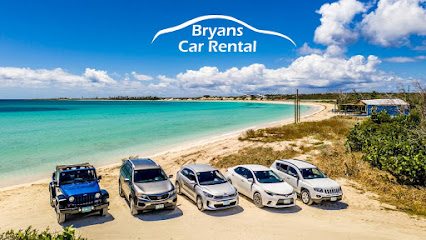
Andy's Auto Rentals
Discover the beauty of Anguilla with Andy's Auto Rentals—your gateway to unforgettable island adventures in the Caribbean.
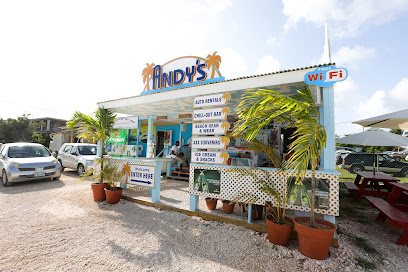
Anguilla Arch
Explore the Anguilla Arch, a breathtaking natural wonder offering stunning views and a serene atmosphere perfect for relaxation and photography.

Anguilla Great House Beach Resort
Experience the ultimate tropical retreat at Anguilla Great House Beach Resort, where luxury meets the stunning beauty of Rendezvous Bay.

The Ferryboat Inn
Discover tranquility at The Ferryboat Inn in Blowing Point, Anguilla – your serene escape with stunning ocean views and local charm.

Johnno's
Discover the flavors of Anguilla at Johnno's, where beachfront dining meets authentic Caribbean cuisine in a vibrant atmosphere.

Little Bay
Discover the serene beauty of Little Bay, a stunning beach in Anguilla perfect for relaxation, swimming, and unforgettable sunsets.

Rendezvous Bay Hotel
Discover the beauty of Anguilla at Rendezvous Bay Hotel, where stunning views, luxury accommodations, and serene beaches await.

Tradition Sailing Charters Anguilla
Discover the stunning coastlines of Anguilla with Tradition Sailing Charters, your gateway to unforgettable sailing adventures and breathtaking island views.

Unmissable attractions to see
Loterie Farm
Explore Loterie Farm in St. Martin for thrilling hikes, serene pools, and delectable tapas in a stunning natural setting.

Rainforest Adventures St Maarten
Experience the breathtaking beauty and thrilling adventures at Rainforest Adventures St Maarten, where nature and excitement meet in perfect harmony.

Topper's Rhum Distillery
Experience the rich flavors of rum and the art of distillation at Topper's Rhum Distillery in beautiful Sint Maarten.

Yoda Guy Movie Exhibit
Discover the magic of cinema at the Yoda Guy Movie Exhibit in Philipsburg, Sint Maarten, showcasing the artistry behind your favorite films.

Emilio Wilson Park
Discover the historical charm and natural beauty of Emilio Wilson Park in Sint Maarten, a perfect blend of culture and tranquility.

Anguilla Arch
Experience the breathtaking beauty of Anguilla Arch, a serene scenic spot perfect for relaxation, photography, and connecting with nature.

Sandy Island
Experience the serene beauty of Sandy Island in Anguilla, a tranquil paradise perfect for relaxation, adventure, and unforgettable sunsets.

Tradition Sailing Charters Anguilla
Embark on an unforgettable sailing adventure with Tradition Sailing Charters Anguilla, where stunning scenery meets exceptional service on the Caribbean waters.

Crocus Bay Beach
Discover the tranquil beauty of Crocus Bay Beach in Anguilla, where crystal-clear waters and soft sands create a perfect tropical retreat.

The Salt Pickers
Explore The Salt Pickers, a historical landmark in Philipsburg, Sint Maarten, and uncover the island's rich salt trade heritage.

Meads Bay Beach
Discover the pristine beauty of Meads Bay Beach in Anguilla, where crystal-clear waters and soft sands create the ultimate tropical getaway.

Man On Chair Statue
Explore the whimsical Man On Chair Statue in Cole Bay, Sint Maarten, a charming photo spot that embodies the island's relaxed vibe.

Savannah Gallery
Experience the vibrant art scene of Anguilla at Savannah Gallery, showcasing local talent and unique pieces in a charming setting.

St Maarten National Flag Pole
Discover the iconic St. Maarten National Flag Pole, a symbol of the island's pride and cultural heritage, offering stunning views and a sense of community.

Prickley Pear Cays
Explore the breathtaking Prickley Pear Cays in Anguilla, where pristine beaches and vibrant marine life await your discovery.

Essential places to dine
Straw Hat Restaurant
Experience exquisite dining at Straw Hat Restaurant in Anguilla - where culinary artistry meets breathtaking ocean views.

Da'Vida
Discover Da'Vida: An exquisite dining experience in Anguilla offering local flavors, stunning views, and unforgettable moments by the sea.

Roy's Bayside Grill
Discover Roy's Bayside Grill: A delightful restaurant in Anguilla serving fresh Caribbean cuisine with stunning bay views.

Sunshine Shack
Experience the flavors of the Caribbean at Sunshine Shack - your beachfront dining destination in Anguilla.

Ocean Echo Anguilla
Experience culinary excellence at Ocean Echo Anguilla with breathtaking ocean views and delicious local seafood delicacies.

Tasty's
Discover Tasty's in Anguilla: A vibrant restaurant offering authentic Caribbean flavors in a charming setting.

Veya Restaurant
Experience the best of Caribbean cuisine at Veya Restaurant in Anguilla, where fresh local ingredients meet innovative culinary artistry.

Dolce Vita
Experience exquisite dining at Dolce Vita in Sandy Ground, Anguilla – where local flavors meet international cuisine in an unforgettable setting.

Trattoria Tramonto
Discover Trattoria Tramonto: An Italian culinary haven nestled in Anguilla's stunning landscape offering breathtaking views and unforgettable flavors.
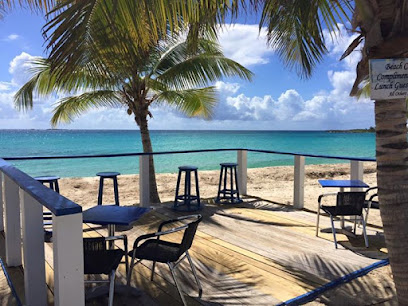
E’s Oven
Experience authentic Caribbean cuisine at E's Oven in Anguilla—where every dish tells a story of flavor and tradition.

Mango's Seaside Grill
Experience exquisite Caribbean cuisine at Mango's Seaside Grill while enjoying stunning ocean views in beautiful Anguilla.

Andy's Restaurant & Bar
Experience authentic Caribbean flavors at Andy's Restaurant & Bar in Anguilla - where every meal is a celebration of island life.

Jacala Beach Restaurant
Experience exquisite Caribbean cuisine with stunning beachfront views at Jacala Beach Restaurant in Meads Bay, Anguilla.

Barrel Stay Beach Front Restaurant
Discover culinary delights at Barrel Stay Beach Front Restaurant in Anguilla – where fresh seafood meets stunning ocean views.
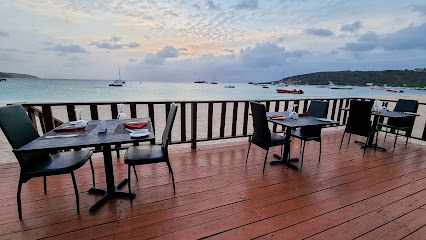
Johnno's
Discover authentic Caribbean cuisine at Johnno's in Sandy Ground, Anguilla – where every meal is a celebration of flavor and culture.

Markets, malls and hidden boutiques
JW Proctors Grocery Store
Explore JW Proctors Grocery Store for a unique shopping experience in Anguilla, featuring local delicacies and international products.

The Village Bakehouse
Discover The Village Bakehouse in Anguilla, where every bite tells a story of Caribbean flavors and artisanal craftsmanship.

ABC Supplies
Discover ABC Supplies, the ultimate hardware shop in The Valley, Anguilla, where quality meets local charm and diverse tools await!

BIG STORE
Explore BIG STORE in Anguilla for everything from groceries to unique furniture, blending convenience with local charm in a vibrant shopping experience.

Irie Life
Explore Irie Life: Anguilla's premier gift shop for unique souvenirs, local crafts, and a warm shopping experience.

The Gadget City
Discover the ultimate electronics haven in Anguilla at The Gadget City, where innovation meets fun for all ages.

Unique Trading
Explore Unique Trading in Anguilla for fresh groceries, local delicacies, and a taste of island life, all in a friendly supermarket setting.

GAB's Party Essentials
Explore GAB's Party Essentials in Anguilla for unique gifts, party supplies, and local crafts that add joy to any celebration.

Essentials Stationery Store
Discover a treasure trove of office supplies and local crafts at Essentials Stationery Store in Crocus Hill, Anguilla.

Sea Spray Gift Shop
Explore the heart of Anguilla at Sea Spray Gift Shop, where unique local crafts and souvenirs await every traveler.

Les Grands Vins de France Wine Shop
Explore exquisite French wines at Les Grands Vins de France Wine Shop in Anguilla – a paradise for wine enthusiasts seeking authentic selections.

The Gift Box
Explore unique handcrafted treasures at The Gift Box in Anguilla, your go-to gift shop for unforgettable souvenirs and local artisan products.

Anguilla Sands and Salts
Explore Anguilla Sands and Salts for unique souvenirs and local crafts that embody the spirit of the island and make unforgettable memories.

Lake's Home Decor & Haberdashery
Explore a vibrant collection of homewares and local crafts at Lake's Home Decor & Haberdashery in Anguilla, a must-visit for unique souvenirs.

Anguilla Electronics
Explore Anguilla Electronics for the latest gadgets and expert repairs in The Quarter, ensuring your devices are ready for every adventure.

Essential bars & hidden hideouts
Elvis Beach Bar
Discover the lively essence of Anguilla at Elvis Beach Bar, where delicious food, refreshing drinks, and beautiful beach views await.

Roy's Bayside Grill
Experience the vibrant flavors and stunning views at Roy's Bayside Grill, a premier bar and restaurant in Sandy Ground, Anguilla.

Bankie Banx's Dune Preserve
Discover the lively spirit of Anguilla at Bankie Banx's Dune Preserve, a premier live music bar and restaurant on Rendezvous Bay.

SandBar
Experience the vibrant atmosphere of SandBar in Anguilla, where tropical drinks meet stunning ocean views and lively local culture.

Lit lounge
Experience the vibrant nightlife of Anguilla at Lit Lounge, where refreshing drinks, great music, and unforgettable memories await.

Coconos Restaurant
Discover the culinary treasures of Anguilla at Coconos Restaurant, where every dish is a delightful experience amidst stunning ocean views.

Coconuts Beachbar And Grill
Discover the vibrant Coconuts Beachbar And Grill in Anguilla, where delicious Caribbean cuisine meets stunning ocean views, perfect for relaxation.

Shake Shack
Experience the flavors of Shake Shack in Blowing Point, Anguilla, where delicious burgers and shakes meet Caribbean charm.

Unique Bar & Grill
Experience the vibrant flavors of Anguilla at Unique Bar & Grill, where every dish is a celebration of local ingredients and Caribbean hospitality.

Anguilla Hillside Bar & Grill
Experience the best of Caribbean cuisine with breathtaking views at Anguilla Hillside Bar & Grill, your perfect getaway on the island.

Grilled Spot BBQ
Experience the best of Anguilla's barbecue at Grilled Spot BBQ, where smoky flavors and local hospitality create unforgettable dining moments.

Amiola's
Discover the heart of Anguilla at Amiola's, where tropical drinks and vibrant culture come together in a relaxed bar atmosphere.
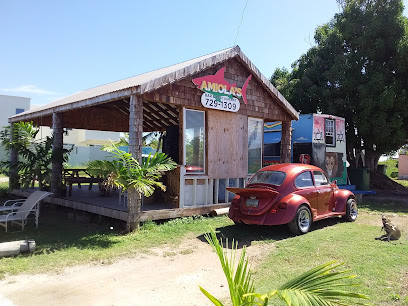
Bubblicious
Discover Bubblicious in Blowing Point, Anguilla – a lively bar known for its unique bubble teas and cocktails, perfect for a laid-back island experience.

Bushbar Anguilla
Experience tropical bliss at Bushbar Anguilla, where vibrant cocktails and local charm create unforgettable island memories.

Go Local
Experience the authentic flavors of the Caribbean at Go Local, a vibrant restaurant in Blowing Point, Anguilla, specializing in fresh, local cuisine.

Local Phrases
-
- HelloHello
[Hello] - GoodbyeBye
[Bye] - YesYes
[Yes] - NoNo
[No] - Please/You're welcomePliz
[Pliz] - Thank youTank yu
[Tank yu] - Excuse me/SorrySari
[Sari] - How are you?How yu duin?
[How yu duin?] - Fine. And you?Ai fain, an yu?
[Ai fain, an yu?] - Do you speak English?Yu spik Inglish?
[Yu spik Inglish?] - I don't understandAi nu andastan
[Ai nu andastan]
- HelloHello
-
- I'd like to see the menu, pleaseMi wah si di menyoo, pliz
[Mi wah si di menyoo, pliz] - I don't eat meatMi na it mit
[Mi na it mit] - Cheers!Chiz!
[Chiz!] - I would like to pay, pleaseMi wah pay, pliz
[Mi wah pay, pliz]
- I'd like to see the menu, pleaseMi wah si di menyoo, pliz
-
- Help!Elp!
[Elp!] - Go away!Go awe!
[Go awe!] - Call the Police!Kal di Polis!
[Kal di Polis!] - Call a doctor!Kal a dokta!
[Kal a dokta!] - I'm lostMi los
[Mi los] - I'm illMi siik
[Mi siik]
- Help!Elp!
-
- I'd like to buy...Mi wah bay...
[Mi wah bay...] - I'm just lookingMi jas lukin
[Mi jas lukin] - How much is it?Ow much it cost?
[Ow much it cost?] - That's too expensiveDat tu ekspensiv
[Dat tu ekspensiv] - Can you lower the price?Yu kaan lowa di prais?
[Yu kaan lowa di prais?]
- I'd like to buy...Mi wah bay...
-
- What time is it?Wat taim it iz?
[Wat taim it iz?] - It's one o'clockIt wan aaklok
[It wan aaklok] - Half past (10)Arf paas (10)
[Arf paas (10)] - MorningMaanin
[Maanin] - AfternoonAftanun
[Aftanun] - EveningIvinin
[Ivinin] - YesterdayYestade
[Yestade] - TodayTudei
[Tudei] - TomorrowTamara
[Tamara] - 1Wan
[Wan] - 2Tu
[Tu] - 3Chrii
[Chrii] - 4Fo
[Fo] - 5Faiv
[Faiv] - 6Siks
[Siks] - 7Seven
[Seven] - 8Eit
[Eit] - 9Nain
[Nain] - 10Ten
[Ten]
- What time is it?Wat taim it iz?
-
- Where's a/the...?Weh di...?
[Weh di...?] - What's the address?Wat iz di adres?
[Wat iz di adres?] - Can you show me (on the map)?Yu kaan shuo mi (an di maap)?
[Yu kaan shuo mi (an di maap)?] - When's the next (bus)?Wen di neks (bas)?
[Wen di neks (bas)?] - A ticket (to ....)A tiket (tu ....)
[A tiket (tu ....)]
- Where's a/the...?Weh di...?
History of Blowing Point Village
-
Before European colonization, Blowing Point Village and the rest of Anguilla were inhabited by the indigenous Arawak and Carib peoples. Archaeological findings suggest that these early inhabitants engaged in fishing, farming, and crafting pottery, leaving behind a rich cultural heritage evidenced by petroglyphs and other artifacts.
-
Blowing Point Village's history took a dramatic turn in the 1600s with the arrival of European colonizers. Initially settled by the English, the island became a focal point for sugar plantations. The village served as a small but vital port for the transportation of sugar and other goods. The remnants of colonial architecture and plantation ruins still tell tales of this era.
-
Like much of the Caribbean, Blowing Point Village was significantly affected by the transatlantic slave trade. Enslaved Africans were brought to work on the plantations, and their descendants form a significant part of the local population today. The abolition of slavery in 1834 marked a pivotal moment in the village’s history, leading to new forms of community and economic arrangements.
-
Blowing Point Village played a role in the Anguillian Revolution of 1967. Frustrated by the lack of development and political neglect, the people of Anguilla declared independence from the associated state of Saint Kitts and Nevis. Blowing Point, with its strategic port, was crucial for the movement of people and supplies during this period of civil unrest.
-
In the latter half of the 20th century, Blowing Point Village began to transform from a quiet, agricultural community into a burgeoning tourism hub. The village's ferry terminal became the primary gateway for visitors arriving from Saint Martin, boosting local businesses and fostering a vibrant cultural exchange. This period saw substantial investments in infrastructure and hospitality services.
-
Blowing Point Village is rich in cultural traditions, many of which are celebrated through annual festivals. Events like the Anguilla Summer Festival showcase calypso music, boat racing, and traditional dances. These festivals not only celebrate the island's heritage but also attract tourists, thereby contributing to the local economy.
-
Today, Blowing Point Village balances its historical legacy with modern growth. Community initiatives focus on sustainable tourism and preserving the village’s cultural and natural resources. The local economy thrives on a mix of tourism, fishing, and small-scale agriculture, all while maintaining the tight-knit community spirit that has long characterized the village.
Blowing Point Village Essentials
-
Blowing Point Village is located on the island of Anguilla in the Caribbean. The most common way to reach Anguilla is by flying into Clayton J. Lloyd International Airport (AXA), which serves regional flights. Alternatively, many travelers fly into Princess Juliana International Airport (SXM) in Sint Maarten and then take a ferry or private boat to Blowing Point Ferry Terminal in Anguilla. The ferry ride takes about 20-25 minutes and offers a scenic view of the Caribbean Sea.
-
Blowing Point Village is small and easily navigable. Local taxis are widely available and can be hailed on the street or arranged through your accommodation. Car rentals are also an option, providing more flexibility to explore the island at your own pace. Bicycles and scooters can be rented for shorter distances and leisurely exploration. Note that there is no formal public transportation system in Anguilla.
-
The official currency of Anguilla is the Eastern Caribbean Dollar (XCD), though US Dollars (USD) are widely accepted. Credit cards are commonly used in hotels, restaurants, and shops, but it's advisable to carry some cash for smaller establishments and markets. ATMs are available, but be aware of potential international transaction fees.
-
Blowing Point Village is generally safe for tourists, but like any destination, standard precautions should be taken. Avoid secluded areas at night and keep your belongings secure. There are no particular high-crime areas targeting tourists, but it is always best to stay vigilant, especially in busy or unfamiliar areas.
-
In case of emergency, dial 911 for immediate assistance. The Blowing Point Police Station and local medical facilities are equipped to handle emergencies. It is highly recommended to have travel insurance that covers medical emergencies. Pharmacies are available for minor health concerns and over-the-counter medications.
-
Fashion: Do wear light, breathable clothing suitable for a tropical climate. Swimsuits are fine for the beach but should be covered up when in town. Religion: Do respect local customs and traditions, especially when visiting churches or religious sites. Public Transport: There is no formal public transport, so rely on taxis, bikes, or car rentals. Greetings: Do greet people with a friendly 'Good morning' or 'Good afternoon.' A handshake is also appropriate. Eating & Drinking: Do try local cuisine and fresh seafood. Don't refuse hospitality as it may be considered impolite.
-
To experience Blowing Point Village like a local, visit the local markets and interact with the vendors. Enjoy the fresh seafood and local dishes at smaller, family-run restaurants. Participate in local events and festivals if your visit coincides with one. Spend time at the beach during off-peak hours to enjoy a more tranquil experience. Engage with residents, who are often eager to share stories about their village and culture.
Trending Landmark in Blowing Point Village
Nearby Cities to Blowing Point Village
-
Things To Do in South Hill
-
Things To Do in Sandy Ground Village
-
Things To Do in North Hill Village
-
Things To Do in George Hill
-
Things To Do in Long Bay Village
-
Things To Do in West End Village
-
Things To Do in Shoal Bay Village
-
Things To Do in East End Village
-
Things To Do in Island Harbour
-
Things To Do in Sint Peters
-
Things To Do in Lowlands
-
Things To Do in Cole Bay
-
Things To Do in Maho
-
Things To Do in Dieppe Bay Town
-
Things To Do in Sandy Point Town







